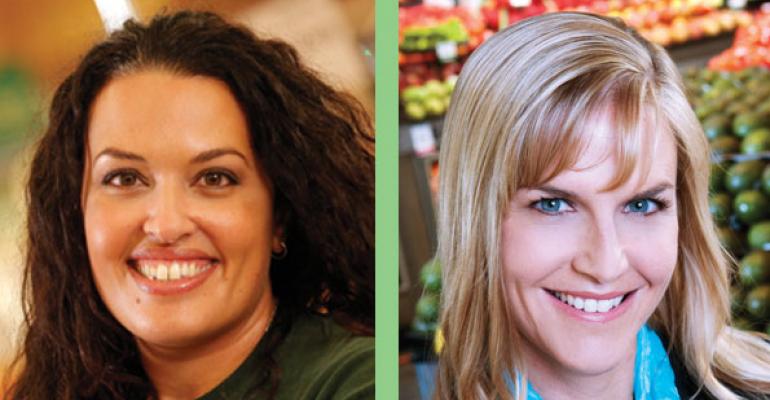Retailers have welcomed a broad assortment of gluten-free products into their stores. The challenge, however, is deciding how to merchandise them. Some retailers favor segregation, while others choose integration.
So, should gluten-free foods be segregated?
YES: Rachel Shemirani, marketing manager, Barons Market, San Diego
A few years ago, one of our favorite customers came up to us with tears in her eyes.
“I was recently diagnosed with celiac disease,” she said, “and I can only eat foods that are gluten-free.”
This was a few years before “gluten-free” became a trendy buzzword popping up on your daily newsfeed. Barons Market had started carrying gluten-free products and they were interspersed on our shelves throughout the store.

“It takes me close to an hour and a half to find my gluten-free products because I have to read every label,” the customer said. “Will you please, please, please put them in one area?”
Her request got us thinking how we could adjust our store model to accommodate our customers even more. People are busier than ever. We designed Barons Market specifically so that our customers could shop in 10 minutes or less, without sacrificing quality food, low prices or a delightful and easy shopping experience. Knowing our store design was meant for a short shopping experience, it shocked us that this gluten-sensitive customer spent an hour and half a week at our stores.
She mentioned she had asked other local supermarkets to put their gluten-free products in one area, but was turned down. We thought, “Why not? Who’s more important than our customer?”
We took her advice and put all of our gluten-free products in one designated area of the store. We labeled refrigerated and frozen product signs with a bright green “GF” stickers, so they were easier to find.
The result was extraordinary. Word quickly got out in the gluten-free community about how easy shopping at Barons was and we had countless customers thank us. We saw an influx in gluten-free shoppers and they regularly told our staff how grateful they were that all of our gluten-free products were in one designated area. Newly diagnosed celiac customers were especially relieved to have found Barons Market and this simply reinforced our decision to keep our gluten-free items together.
Gluten-sensitive customers are like everyone else — really, really busy. Finding great gluten-free products is hard enough without taking hours to search shelves and read labels. Putting gluten-free products in one designated area of the store not only increased our gluten-free sales, but also put us on the map for gluten-free products. More importantly, however, it made our customers really happy.
NO: Barbara Ruhs, registered dietitian and health and wellness food retail consultant
The gluten-free foods market has been growing at an astounding rate over the past five years. As demand for these products increases in the market, retailers are seeking to find the best solution to continue to capitalize on the gluten-free consumer. Should they segregate or integrate products in the store?
A strong case can be made for segregation from a clinical point of view for the celiac patient. However, data suggests that the growth in the category is not solely from the celiac population, but rather the general consumer that perceives “gluten-free” as healthier option.

The largest increase in sales of gluten-free products has been in the conventional retail supermarket channel (vs. natural or specialty stores). This indicates that the increase in gluten-free sales is not from the true celiac patient that needs to follow a strict diet avoiding gluten and the risk of cross-contamination.
I think it’s possible for a celiac patient to shop in a conventional grocery store, but they’re shopping in the aisles and categories that are naturally gluten-free, such as fresh/canned/frozen produce, fresh meats, and rice and other gluten-free grains and starches.
The explosion and growth in the gluten-free category makes it difficult for the average consumers seeking gluten-free products for general health to keep up with new products being introduced. The integration of new gluten-free products alongside their conventional counterparts makes it easier for shoppers to find and try them.
Many years ago, consumers could only buy gluten-free bread in the freezer case. But few, if any, people knew where to find them and sales were slow. Now, with popularity of gluten-free products, you can find gluten-free bread in the commercial bakery aisle, in-store bakery and frozen departments.
The average retailer doesn’t have the luxury of unlimited space. Through integration, customers can help retailers decide which products to keep and which to discontinue.
As a dietitian, I also believe there’s subliminal education that is happening when gluten-free products are integrated throughout the store. For example, shoppers won’t find many new “gluten-free” rice products or canned goods, because gluten never existed in most of these products in the first place. This awareness of naturally gluten-free products can help shoppers avoid gluten without the need to pay a premium price.
Finally, placing gluten-free products alongside conventional products gives the consumer the opportunity to compare all products on a variety of factors, including nutritional attributes, price and availability.
| Suggested Categories | More from Supermarket News |
 |
|

|
|



